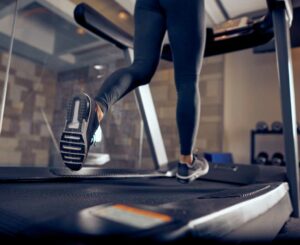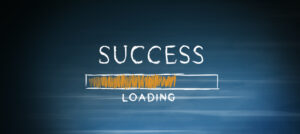
07 Feb New Exercise, New Injury? Common Overuse Injuries & How to Prevent Them
By: Dr. Jessica Hull
As the new year moves on and we reset our goals and expectations for the year, we often tend to go overboard on our newfound dreams – pushing a little too hard, going a little too far, all a little too fast. While our newfound motivation is inspiring, it can also be accompanied by new aches and pains as our bodies are new to the activity and not used to the load.
One area you might find yourself at the beginning of the year is at the gym – lifting weights or trying out those cool moves you’ve recently seen on TikTok. Suddenly, your hands are gripping more weight than they have in years and you may start to notice some elbow pain and soreness around that bone in the inside of the elbow or forearm musculature. Or maybe your form didn’t look totally awesome when you were squatting and deadlifting… and now you have a nagging ache in your low back!
Or perhaps you’re like me and you found yourself on a treadmill, running and running and going nowhere. Maybe half a mile in you start to notice a little pain in your knees or your shins. Or maybe your feet start to feel like someone is stabbing you in the sole. (That certainly was my experience when I first got into running!) Hopefully, you’ll be wiser than I was as you get into these activities and follow the advice below to continue working toward your goals this year, without increasing your pain and getting discouraged. To avoid some of these overuse/newcomer aches and pains, I would recommend the following:
- Start slower than you really want to. It can be easy to go all in and want to hit the gym 8 days a week when motivation is high. However, overdoing it is a huge contributor to developing overuse injuries and adding to burnout. Instead, maybe start with 2-3 days a week to allow your body a chance to adjust, adapt, and get stronger to support your new habit. Plus, you’re more likely to stick to a routine that’s reasonable!
- Don’t minimize the benefits of strength training. Even some gentle strength training can support your goals, especially if you’re trying to get into running or big lifts. You must develop a base of support for your body to be able to tolerate more impact and more weight.
- Don’t ignore pain. There is a difference between pain and soreness. Pain may feel more sharp, stabbing, and sudden and is likely your body telling you to stop. Soreness or muscle fatigue may feel more like a burn or ache and will come on more gradually over time, go away when the activity is done, and may come back again for 24-72 hours after activity. This is called DOMS: delayed-onset muscle soreness. If you notice that sharp, stabbing, or sudden pain during exercise and that immediately feels like you should stop then listen to your body and stop! If you notice the muscle fatigue feeling, lean into it! The only way to grow your body’s tolerance to exercise is to constantly push your own boundaries – but that shouldn’t be painful!
- Schedule an annual exam with your favorite local PTs for a full body assessment, which will help you identify your specific weakness and movement faults, and give you ideas for how to go about addressing them. This will help you stay consistent with your exercise routine in the long term!
If you’re struggling with your new exercise routine or need help reaching your goals (new year’s or otherwise), Body One can help. Our team of experienced, caring providers works with patients of all ages and activity levels. We have three convenient Indianapolis locations: Fishers, North Meridian, and Zionsville. See what makes Body One better – and reach your goals this year!






